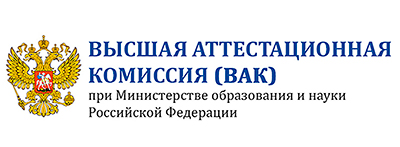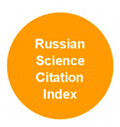Трансформация ценностей иммигрантов в контексте их культурной интеграции: отношение к разводам и добрачным сексуальным отношениям
Аннотация
Статья посвящена изучению отношения иммигрантов из постсоветских стран в России к ценностям индивидуального выбора (показателям сексуальной либерализации) на примере допустимости разводов и сексуальных отношений до брака, а также их сравнению с аналогичными установками россиян. Эмпирическая база исследования представлена опросом мигрантов из постсоветских стран в России (2020 г., 700 респондентов), а также данными седьмой волны Всемирного исследования ценностей (2017 г.). Для выявления факторов, влияющих на консервативность взглядов в отношении разводов и добрачных сексуальных отношений использовано регрессионное моделирование. Показано, что и для иммигрантов, и для россиян предикторами нетолерантного отношения к данным событиям являются пол (для россиян частично), возраст, уровень образования, положение на рынке труда (для иммигрантов частично), семейное положение, религия. Материальное благополучие для обоих групп не имеет связи с изучаемыми представлениями. Расширенные спецификации регрессии для иммигрантов позволяют говорить, что давность приезда положительно связана только с либеральностью взглядов на допустимость развода, но не добрачного секса. Вместе с тем желание связать свою жизнь с Россией уменьшает вероятность крайне консервативных взглядов на оба явления. Формирование российской идентичности – предиктор более либерального отношения к разводам, а сильная этническая и религиозная идентичность – фактор нетерпимости и к разводам, и к добрачным сексуальным отношениям. Делается вывод, что предикторами трансформации ценностных ориентаций иммигрантов в России выступают не длительность проживания и экономическое благополучие, но уровень образования, формирование чувства общности с принимающим обществом и желание связать дальнейшую жизнь с Россией.
Скачивания
Литература
Зеликова Ю.А. (2015). Динамика сексуальной либерализации в современной России: поколенческий анализ. Журнал социологии и социальной антропологии, 18(3), 95-115. http://jourssa.ru/sites/all/files/volumes/2015_3/Zelikova_2015_3.pdf.
Костенко В.В. (2017). Гендерные установки мигрантов-мусульман, населения западной Европы и Арабских стран: сравнительный анализ. (Дисс. канд. социол. наук). М.: НИУ «Высшая школа экономики». 235 с
Лопатина С. Л., Костенко В. В., Понарин Э. Д. (2016). Дело не в исламе: отношение к абортам, разводам и добрачному сексу в девяти постсоветских государствах. Журнал социологии и социальной антропологии, 9(3), 95-115. http://jourssa.ru/sites/all/files/volumes/2016_3/Lopatina_Kostenko_Panarin_2016_3.pdf.
Al-Ali N., Black R., Koser K. (2001). Refugees and transnationalism: the experience of Bosnians and Eritreans in Europe. Journal of Ethnic and Migration studies, 27(4), 615-634. https://doi.org/10.1080/13691830120090412.
Anderson B. (1983). Imagined Communities: Reflections on the Origin and Spread of Nationalism. London and New York: Verso.
Bastia T., Busse E. (2011). Transnational migration and changing gender relations in Peruvian and Bolivian cities. Diversities, 13(1), 19-33.
Bertossi C. (2003). Negotiating the Boundaries of Equality in Europe. The Good Society, 12(2), 33-39. https://doi.org/10.1353/gso.2004.0002.
Bettio F., Simonazzi A., Villa P. (2006). Change in care regimes and female migration: the «care drain» in the Mediterranean. Journal of European social policy, 16(3), 271-285. https://doi.org/10.1177/0958928706065598.
Biao X. (2007). How far are the left‐behind left behind? A preliminary study in rural China. Population, Space and Place, 13(3), 179-191. https://doi.org/10.1002/PSP.437.
Carling J. (2005). Gender dimensions of international migration. Global Migration Perspectives, 35, 1-26.
Connor P. (2010). Contexts of immigrant receptivity and immigrant religious outcomes: The case of Muslims in Western Europe. Ethnic and Racial Studies, 33(3), 376-403. https://doi.org/10.1080/01419870902935963.
de Hoon S., van Tubergen F. (2014). The religiosity of children of immigrants and natives in England, Germany, and the Netherlands: The role of parents and peers in class. European Sociological Review, 30(2), 194-206. https://doi.org/10.1093/esr/jcu038.
Diehl C., Schnell R. (2006). “Reactive ethnicity” or “assimilation”? Statements, arguments, and first empirical evidence for labor migrants in Germany. International Migration Review, 40(4), 786-816. https://doi.org/10.1111/j.1747-7379.2006.00044.x.
Ebaugh H.R. (2003). Religion and the new immigrants. Hand-book of the Sociology of Religion. https://doi.org/10.1017/CBO9780511807961.017.
Esser H. (2001). Integration und ethnische Schichtung. Mannheim: Mannheimer Zentrum für Europäische Sozialforschung.
Ester P., Halman L., de Moor R. (1993). The Individualizing Society: Values Change in Europe and North America. Tilburg University Press, Tilburg.
Foner N. (2000). Beyond the Melting Pot Three Decades Later: Recent Immigrants and New York's New Ethnic Mixture. The International Migration Review, 34(1), 255-262. https://doi.org/10.2307/2676022. https://doi.org/10.1177/019791830003400113.
Gills B.K. (2002). Globalization and the Politics of Resistance. London: Palgrave Macmillan.
Gordon M. (1964). The Nature of Assimilation. Assimilation in American Life. New York: Oxford University Press.
Gundelach P. (1994). National value differences: modernization or institutionalization? International Journal of Comparative Sociology, 35(1-2), 37-58.
Hagan J., Ebaugh H. R. (2003). Calling Upon the Sacred: Migrants’ Use of Religion in the Migration Process. International Migration Review, 37(4), 1145-1162. https://doi.org/10.1111/j.1747-7379.2003.tb00173.x.
Hirschman C. (2004). The role of religion in the origins and adaptation of immigrant groups in the United States. International Migration Review, 38(3), 1206-1233. https://doi.org/10.1111/j.1747-7379.2004.tb00233.x.
Hofmann E.T. (2014). Does Gender Ideology Matter in Migration? Evidence from the Republic of Georgia. International Journal of Sociology, 44(3), 23-41. https://doi.org/10.2753/IJS0020-7659440302.
Holton R. (2000). Globalization’s Cultural Consequences. Annals of the American Academy of Political and Social Sciences, 570, 140‐152. https://doi.org/10.1177/0002716200570001011.
Inglehart R. (1997). Modernization and postmodernization: cultural, economic, and political change in 43 societies. Princeton (New Jersey): Princeton University Press.
Inglehart R., Norris P. (2003). Rising tide: Gender equality and cultural change around the world. Cambridge University Press.
Kastoryano R. (2004). Religion and incorporation: Islam in France and Germany. International Migration Review, 38(3), 1234-1255. https://doi.org/10.1111/j.1747-7379.2004.tb00234.x.
Kosack G. (1976). Migrant women: the move to Western Europe – a step towards emancipation? Race & Class, 17(4), 369-380.
Massey D.S., Arango J., Hugo G., Kouaouci A., Pel-legrino A., Taylor E.J. (2005). Worlds in Motion: Understanding International Migration at the End of the Millennium. New York: Oxford University Press.
Menjívar C. (1999). The Intersection of Work and Gender Central American Immigrant Women and Employment in California. American Behavioral Scientist, 42(4), 601-627. https://doi.org/10.1177/00027649921954381.
Monsutti A. (2007). Migration as a Rite of Passage: Young Afghans Building Masculinity and Adulthood in Iran. Iranian Studies, 40(2), 167-185. https://doi.org/10.1080/00210860701276183.
Morokvasic M. (1984). Birds of Passage are also Women... International Migration Review, Special Issue: Women in Migration, 18(4), 897-898. https://doi.org/10.1177/019791838401800402.
Oishi N. (2002). Gender and migration: an integrative approach. Working Paper No.49, Center for Comparative Immigration Studies. https://escholarship.org/uc/item/0s04g29f.
Palloni A., Massey D., Ceballos M., Espinosa K., Spittel M. (2001). Social Capital and International Migration: A Test Using Information on Family Networks. American Journal of Sociology, 106(5), 1262-1298. https://doi.org/10.1086/320817.
Penninx R. (2019). Problems of and solutions for the study of Immigrant Integration. Comparative Migration Studies, 7 (13), 2-11. https://doi.org/10.1186/s40878-019-0122-x.
Pittin R. (1984). Migration of women in Nigeria: the Hausa case. International Migration Review, Special Issue: Women in Migration, 18(4), 1293-1314.
Redfield R., Linton R., Herskovits M. (1936). Memorandum for the Study of Acculturation. American Anthropologist, 38(1), 149-152.
Soehl T. (2017). Social Reproduction of Religiosity in the Immigrant Context: The Role of Family Transmission and Family Formation – Evidence from France. International Migration Review, 51(4), 999-1030. https://doi.org/10.1111/imre.12289.
Voas D., Fleischmann F. (2012). Islam Moves West: Religious Change in the First and Second Generations. Annual Review of Sociology, 38(1), 525-545. https://doi.org/10.1146/annurev-soc-071811-145455.
Warner R.S. (2007). The role of religion in the process of segmented assimilation. Annals of the American Academy of Political and Social Science, 612(1), 102-115. https://doi.org/10.1177/0002716207301189.
Warner W., Srole L. (1945). The social System of American Ethnic Groups. New Haven: Yale University Press.
Welzel C. (2013). Freedom rising. Human Empowerment and the Quest for Emancipation. Cambridge: Cambridge University Press.
Wilensky H.L. (2002). Rich democracies: Political economy, public policy and performance. Berkeley CA: University of California Press.
Williams N., Thornton A., Young-DeMarco L. (2014). Migrant Values and Beliefs: How Are They Different and How Do They Change? Journal of Ethnic and Migration Studies, 40(5), 796-813. https://doi.org/10.1080/1369183X.2013.830501.
Yusupova G., Ponarin E. (2017). Social Remittances in Religion: Muslim Migrants in Russia and Transformation of Islamic Practices. Problems of Post-Communism, 65(3), 1-13. https://doi.org/10.1080/10758216.2016.1224552.
























